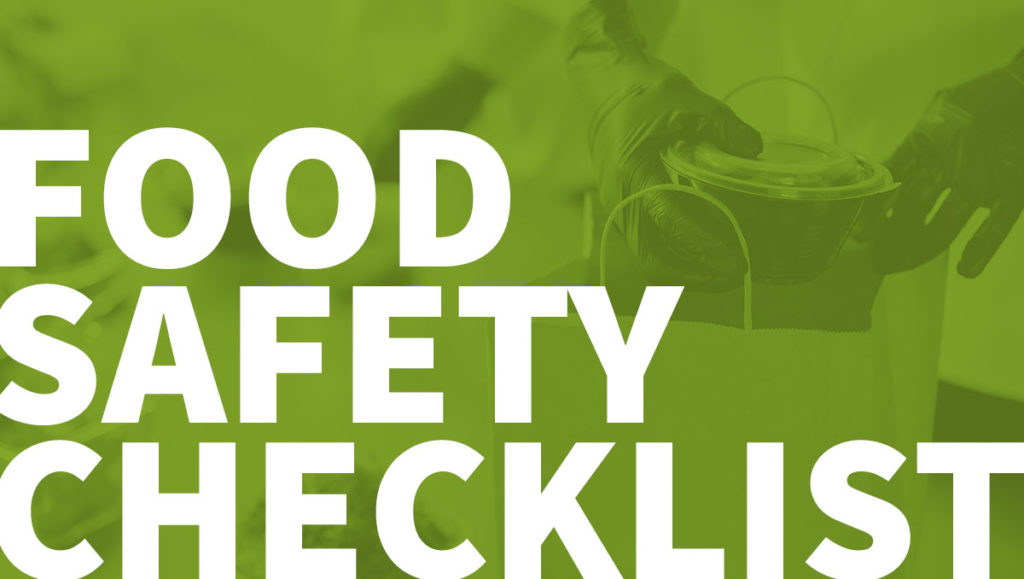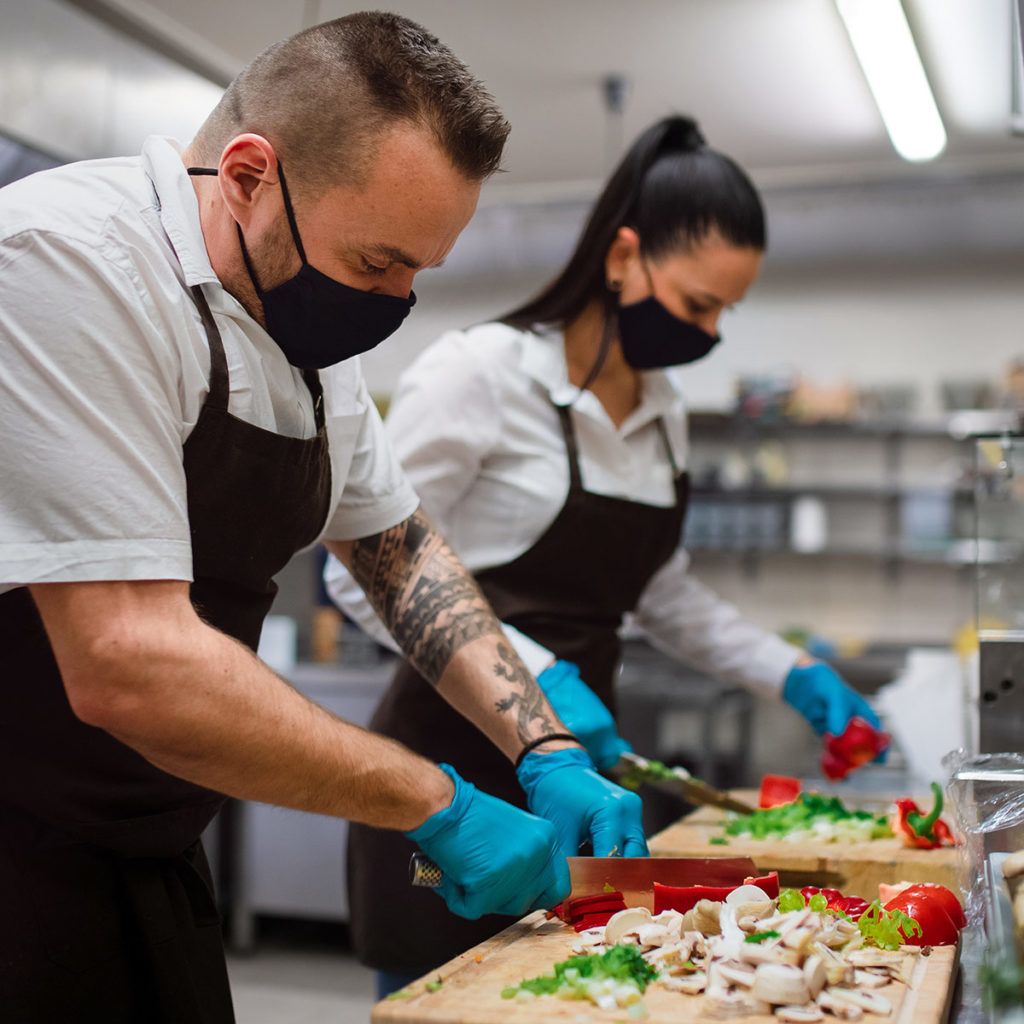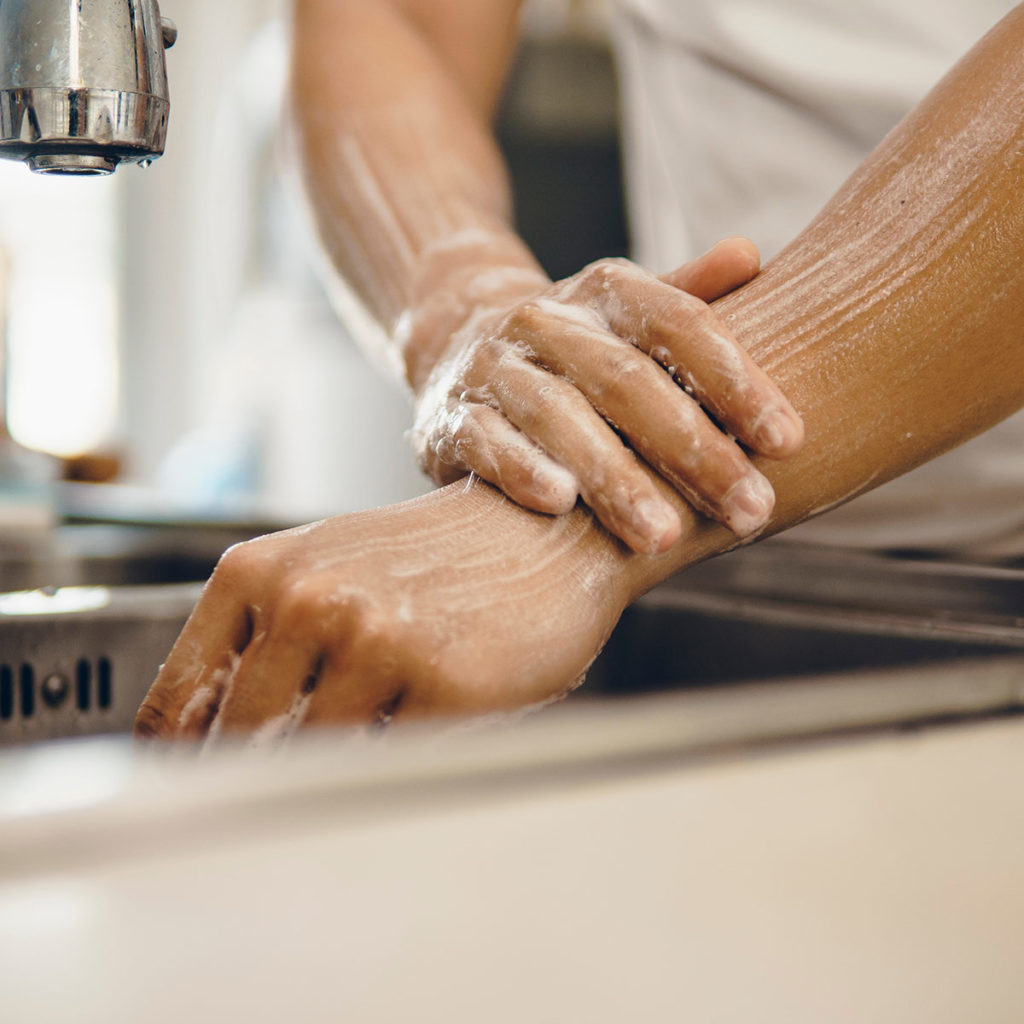
With September being Food Safety Education Month, now is a great time to review how to practice proper food safety and sanitation in your restaurant.
According to QSR Magazine, foodborne illnesses such as norovirus and salmonella cost the foodservice industry over $55 billion each year. This is a hefty price for something that can be avoided. To help, we developed a handful of free resources such as a comprehensive food safety guide and the following food safety checklist for restaurants.
Food Safety, Food Storage and Temperature Control
Improper food storage and temperature control can easily lead to foodborne illness. Follow these simple tips to prevent food spoilage and avoid the temperature “danger zone” (40 °F – 140 °F):
- Always store food in air-tight containers
- Follow the FIFO rule (first in, first out)
- Never overload your refrigerators or freezers
- Keep track of your refrigerator/freezer temperature
- Make it a habit to use an infrared thermometer
Food Handling

As a responsible restaurant owner, you should be taking safety precautions from the moment you receive inventory to the time it’s served to your customers.
- Stocking: Make sure that your storage areas are cleaned and organized. Always put the newest items in the back and store raw meat, poultry, and seafood in sealed bags or air-tight containers to prevent cross-contamination.
- Cooking: Remind your kitchen staff to wash their hands and all surfaces often. Wash all produce thoroughly and make sure that all raw foods are cooked to a safe internal temperature. To keep your staff safe, keep your kitchen stocked with personal safety supplies like oven mitts.
- Serving: Always serve food on a clean plate. Never place cooked food on a surface that has been in contact with raw food products.
Waste Management and Restrooms

You can’t practice food safety without proper sanitation, which is why your restrooms should be sanitized regularly and equipped with adequate hand-washing materials. Faulty plumbing in your commercial kitchen can also lead to foodborne illnesses. If your plumbing equipment isn’t working as it should check out our selection of plumbing parts.
Equipment and Area Cleaning
Keep your commercial kitchen stocked with cleaning supplies and educate your staff on pest avoidance and proper waste management. Food scraps should be disposed of daily to prevent pests and cross-contamination.
Refresh Staff Training

It never hurts to retrain your kitchen staff on proper food safety and waste management techniques. Start by reviewing the HACCP Principles and throwing in a practice health inspection every once in a while. According to the World Health Organization, an estimated 600 million people fall ill from eating compromised food each year. Following proper food safety and sanitation measures in your restaurant will not only prevent an outbreak but also prepare you for your next health inspection. Head over to etundra.com to get all the supplies you need for a safer and cleaner kitchen today.
 Corner Booth Blog | TundraFMP Restaurant Supply, News & Equipment Blog
Corner Booth Blog | TundraFMP Restaurant Supply, News & Equipment Blog



